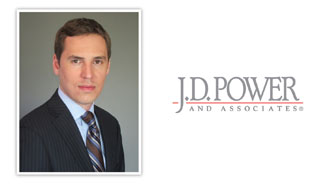J.D. Power: December Leasing Breaks Beyond 20% Penetration

Several factors helped lift December’s leasing penetration level by more than 26 percent on a year-over-year basis, according to an analyst with J.D. Power and Associates.
In fact, Auto Remarketing learned that December’s lease penetration level came in at 21 percent.
Driving this penetration level were typical “lease-centric” segments, which had a solid December; automakers rolling out “aggressive” year-end promotions, many of which centered on the lease segment; and OEMs ramped up their flexibility with leasing.
According to the most recent Industry Health Review provided to Auto Remarketing by J.D. Power, the 21 percent level compares to 16.6 percent penetration in December 2009. It also marks a 6.6-percent hike from November, when the leasing level was at 19.7 percent.
The gains in lease penetration were widespread, with all segments showing at least a double-digit improvement from a year ago.
Thomas King, senior director at J.D. Power, explained the three factors he believes led to the leasing surge. The first of these is what he called a “mix factor.”
By that, King meant that segments which typically are strong in the lease market — like luxury and premium vehicles — were very robust in December, as they usually are.
The final month of the year is often a strong period for luxury brands, which tend to make a big push with things like leasing commercials on TV throughout the holidays.
“We had some mix effects,” he noted. “Some the segments that are very lease-centric did very well in December.”
OEMs are also doing more leases in segments that don’t usually see high penetration levels, and this has led to increased availability of leases.
Additionally, automakers pushed aggressive year-end programs to spur sales, “and in many cases, they were using leases as their chosen instrument,” King noted.
Question is, will such escalated growth continue throughout 2011?
“December is always high,” King shared. “We wouldn’t expect to see much growth beyond this level, but we do expect leasing to remain a key component of the market environment through 2011.”
Breaking December’s data down by segment, the largest year-over-year increases (percentage-wise) among the 10 vehicle categories listed by J.D. Power were found in the compact basis segment (up 321 percent), midsize utility (up 142 percent) and large pickups (up 72 percent). These were areas where leasing is not traditionally as strong, King pointed out.
“This is the theme of increased availability of leasing,” he noted.
However, for large pickups (3 percent penetration in December) and compact basic vehicles (6 percent), the lease penetration levels are still rather small.
“In absolute terms, they still remain very low,” he stressed.
However, King pointed out that “a year ago, (leases in some segments) weren’t available on a supported-rate basis.” Now that they are, leasing levels in non-traditional vehicle categories have gone up.
Full-Year Lease Level Exceeds 25 Percent
Moving on, CNW Research recently provided some full-year data on industry leasing levels, and pointed out that that full-year lease penetration was at 25.61 percent in 2010. This marks an improvement from the 22.16 percent level seen in full-year 2009.
Breaking it down, domestics’ lease penetration was at 22.09 percent, Europeans hit 47.84 percent and Asian brands reached 24.95 percent. CNW emphasized that its data includes leases through both captives and third-party companies.
“Anyone who wonders why automakers are pushing leasing once again need only look at the hidden advantages: Encouraging acquisition of a vehicle sooner, quicker entry into the market and a switch in initial brand intentions,” explained Art Spinella, president of CNW.
“This on top of the usual reasons including faster turnover among lessees and better customer control by knowing when a lease is up,” he added.
To illustrate these points, CNW provided the following data.
In the early part of January, 6.23 percent of all new-vehicle intenders were swayed by incentives to jump into the market early, according to CNW. Meanwhile, the proportion of all new-vehicle shoppers who were spurred by an incentive to make a purchase earlier than planned was at 15.06 percent.
Additionally, 29.74 percent of overall buyers said an incentive led them to buy from a different brand than their old ride.
Meanwhile, 48.97 percent didn’t adjust their purchase plans at all.
The numbers are quite different for the leasing data CNW provided.
"Lessees were 175 percent more likely to (buy) sooner, about 127 percent more likely to switch brands and less than half as likely to remain on the fence and do nothing different than what they intended," Spinella shared.
WESTLAKE VILLAGE, Calif. –
“Most important, however, was leasing’s ability to bring people to market — nearly twice the share of intenders as overall incentives,” he continued.
Spinella added: “Two key points here: First, leasing, as we’ve been stating for some time, generates more customers who are increasingly loyal to a brand (either voluntarily or out of convenience) and provides a dealership with potentially invaluable customer control.
“Along with that comes faster turnover which will eventually boost the sales per outlet data because re-leasing to the same customer takes far less time than selling to a brand-new customer,” he continued.
Lease Payment Trends
Moving along, CNW also offered a bit of analysis on average lease payments, noting that the past three months have shown modest gains in this arena.
The industry saw its lowest average lease payment level in July 2007 when it hit $227 per month.
“Every automaker was subventing to the tune of thousands of dollars per unit,” Spinella pointed out.
The decline resumed in February 2010, eventually hitting a low of $331 in October. November and December saw slight gains. So far in January, the average lease payment is at $356, compared to $345 in December.
“Firmer residuals and higher-content products are the reason,” Spinella noted.
Subscribe to receive our daily e-newsletter and never miss the latest industry news, trends, and insights across the used-car and remarketing space.


